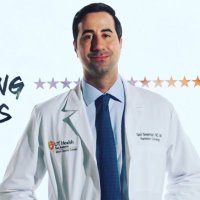
radoncreview_org
@radoncreview
Our mission is to create the most comprehensively updated Rad Onc reference and to make it available for free, forever, for all.
ID: 1174388354995146755
https://www.RadOnc.org 18-09-2019 18:23:10
892 Tweet
3,3K Followers
623 Following

Our meta-analysis comparing EBRT & TACE for HCC is here in ACS Journal Cancer ! (Spoiler: RT benefits patients in LC and PFS) Thank you so much Neil Newman for being such an incredible mentor and guiding me every step of the way on the project! acsjournals.onlinelibrary.wiley.com/doi/10.1002/cn…


Beau Bosko Toskich, MD FSIR Mersiha Hadziahmetovic Yakup Ergün ACS Journal Cancer Completely agree! The key is selecting the best LC modality per patient through multiD decision-making. Dual IR/RO approaches are some of my favorite across any disease site. When total consolidation runs like a well-oiled machine & both hands work together, patients can achieve



radoncreview_org HCC-LIVE Conference Thanks Jeff, I think it highlights a good pt that Riad touches upon. Y90 and SBRT dose are measured differently though both in Gy...you don't need 400 Gy to whole tumor in HCC - it's a radiosensitive histology.

Dr. Nina Niu Sanford radoncreview_org HCC-LIVE Conference Nope. You need 10% of that, in five fractions. ALARA.

Is this the most important question? HCC-LIVE Conference #HCC 🧩


Dr. Nina Niu Sanford radoncreview_org HCC-LIVE Conference I've never understood Y90 dosimetry. The prescription dose in Gy is so high, ~10x EBRT and ~3x LDR Brachy, despite Y90's half-life being much shorter than prostate LDR isotopes. Why does intravascular therapy require such a massive dose? Does any biologically relevant volume

Dr. Nina Niu Sanford Freddy E Escorcia (@freddyeescorcia elsewhere) Also, radiotherapy can improve Child-Pugh scores from B ➡️ A. Lasley et al. Such a great paper! This fact tends to leave surgeons, IR, and med oncs equally jaw-dropped. Try dropping this fun fact at a GI tumor board near you! pubmed.ncbi.nlm.nih.gov/25899219/







